First Lieutenant Daniel Tucker Mathis, Jr.
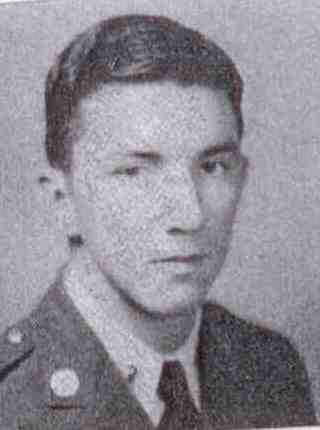
- Unit: 7th Air Force, 15th Fighter Group, 78th Fighter Squadron
- Service Number: O-716185
- Date of Birth: June 3, 1922
- Date of Death: June 1, 1945
- Hometown: Edgefield, South Carolina
- Place of Death: Pacific Ocean, approximately 150 miles south of Osaka, Japan
- Award(s): Purple Heart, Air Medal, World War II Victory Medal, Asiatic/Pacific Campaign Medal
- Cemetery: Courts of the Missing, Court Seven, Honolulu Memorial, National Memorial Cemetery of the Pacific, Honolulu, Hawaiʻi. Sweetwater Cemetery in Edgewater, South Carolina
Kūlanihākoʻi High School (Kihei, Hawaiʻi)
2024/2025
Early Life
Daniel Tucker Mathis, Jr. was born in Edgefield, South Carolina, on June 3, 1922, to parents Daniel T. Mathis and Minnie Lanham Mathis. Mathis’s father, Daniel, graduated from Clemson University with a degree in agriculture. His mother, Minnie, earned her degree at Coker College, where she studied piano and voice. According to the 1920 census, the couple were both employed as teachers in the early years of their marriage while living on the Mathis family farm.
Daniel, known as Dan, was their second child. He had an older sister, Norma, and two younger siblings, Willie Jo and Fred. Their parents ran a cotton farm in Aiken County, South Carolina, near the border with Georgia.
Aiken County Leaders
Minnie Mathis was a community pillar. She was elected Superintendent for the Women’s Missionary Union of the Aiken Baptist Association, which had a membership of over 100 women. She was a talented musician and often sang at weddings and community events. Her children took music lessons and performed in recitals.
Not to be outshone by his wife, Mr. Mathis was a respected farmer in the community. He served on the Aiken County Farm Bureau board, ran for County Commissioner, and was active in local politics.
Mathis’s siblings were also well-known in the community. His brother, Fred, was well-regarded for his livestock skills. His sister, Willie Jo, presented a paper at a regional International Relations Club Conference at the University of North Carolina as a college sophomore at Coker College.
Change in the 1930s
Life in the 1930s was difficult in Aiken County. The 1930 census listed D.T. Mathis as a cotton farmer. The boll weevil decimated farms across South Carolina by the early 1930s. The Mathis family shifted to dairy farming when the 1940 census was taken. While cotton crept back slowly in Aiken County, most farmers turned to other crops.
Daniel Mathis, Sr., and his son Fred became skilled at raising hens. Dan Jr. was also recognized in 4-H for raising prize-winning hogs.
By 1940, when Dan Jr. graduated from high school, he worked on the family farm and prepared to earn his degree in agriculture at Clemson College.
“A gentle, soft-spoken man”
Daniel Tucker Mathis, Jr. graduated from North Augusta High School on June 4, 1940. According to several newspapers, Mathis was known throughout South Carolina as an excellent athlete. According to future wingman Jerry Yellin, he was “a gentle, soft-spoken man” who happened also to be a terrific baseball player.
Dan entered Clemson Agricultural College in the fall of 1940. He enlisted in the U.S. Army Air Corps after his sophomore year and was called to duty in January 1943.

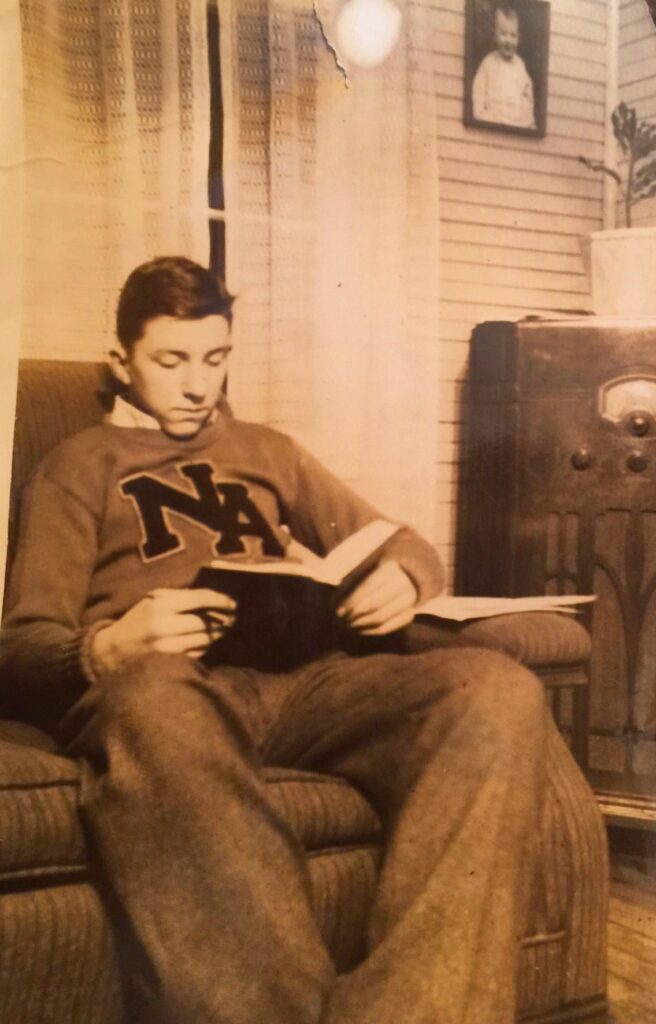
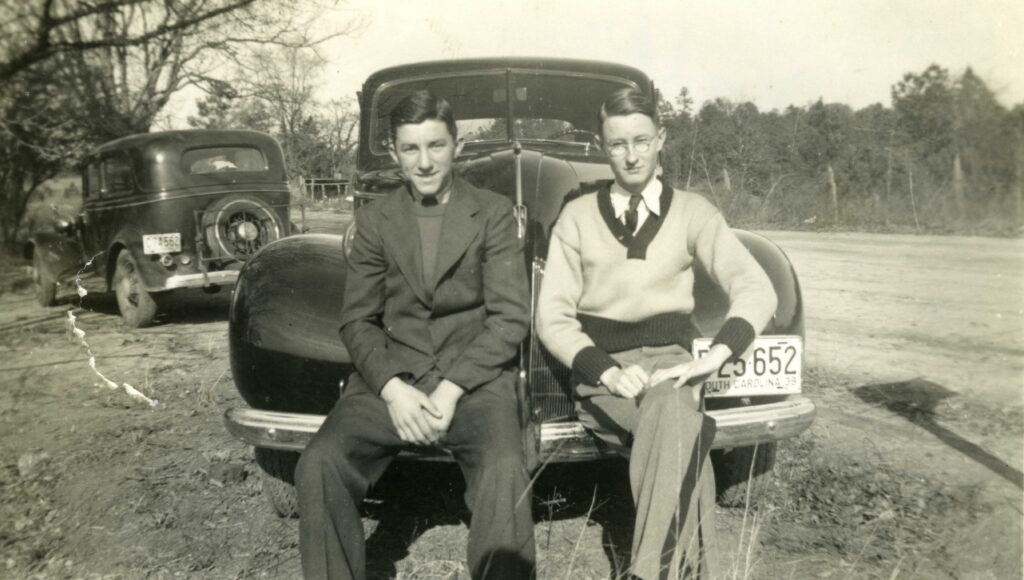
Homefront
North Augusta, South Carolina, is a small city in Aiken County on the border of South Carolina and Georgia. It was developed in the late nineteenth century as a suburb of Augusta, Georgia. It is known as a quaint riverfront town with access to the bigger cities in Georgia and the leisurely pursuits of Aiken County.
Wartime Farming and Industry
Cotton was king in Aiken County during the early twentieth century, and textile mills flourished there. With the destructive arrival of the boll weevil in the 1920s, farmers turned to other crops, including peanuts. Textile mills saw a wartime resurgence, aided by the slow return of cotton as weevil-resistant farming techniques were developed and promoted by the newly established South Carolina Farm Bureau.
The local paper, The Aiken Standard and Review, was filled with advice for farmers. It also had information about rationing programs. When it was someone’s turn to pick up a rationed resource, like a tractor tire, their name was printed in the newspaper. Farmers were instructed on how to get maximum yields from their crops and what they needed to grow in their home gardens.
POW Camp in Aiken
During the war, Aiken County was the location of a camp for German and Italian Prisoners of War (POWs). Germans and Italians arrived at Camp Gordon in 1943, where they reportedly experienced better conditions than expected. As one German POW wrote, life “was incomparably better than we had known as German soldiers.”
Locals in Aiken County had mixed feelings about having a POW camp so close to home. POWs worked various jobs, which included picking peanuts, working in local mills, and helping bring in a variety of other crops. However, as the end of World War II neared and news of the inhumanity of German concentration camps arrived, local sentiment turned against the POWs, and they were estranged from the community for the remainder of their stay.
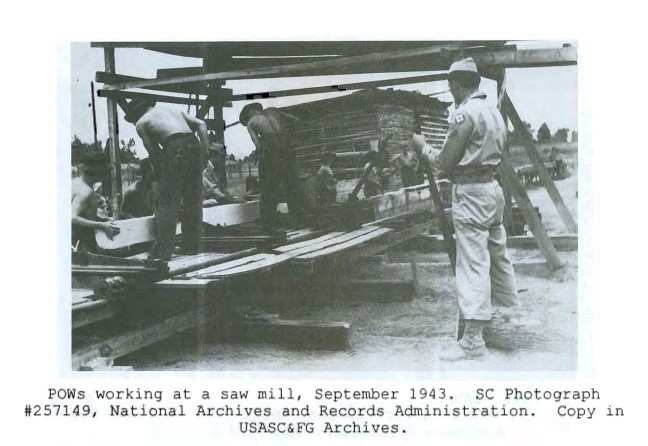
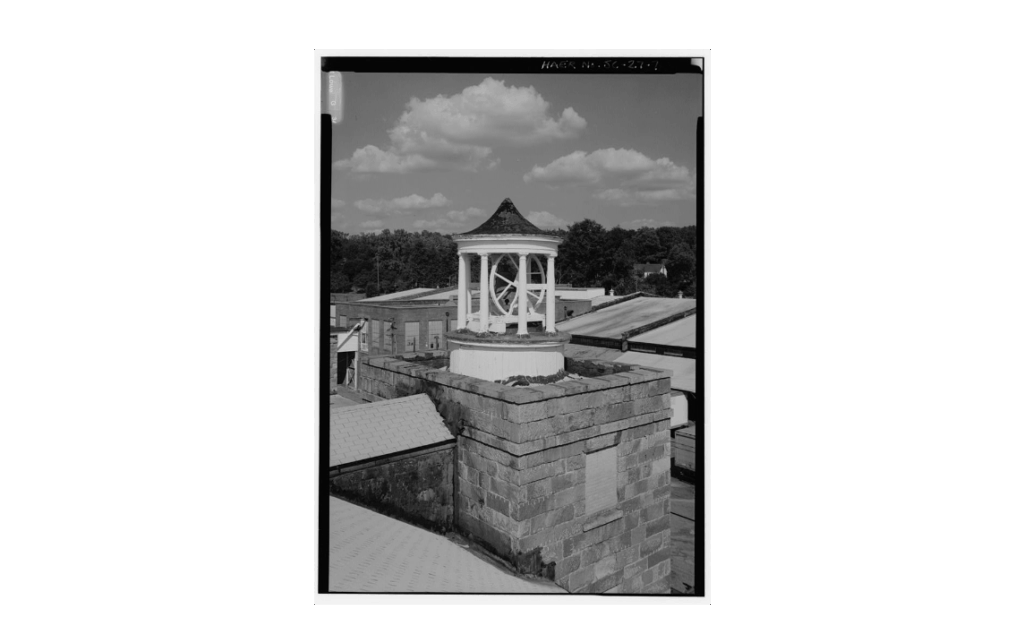
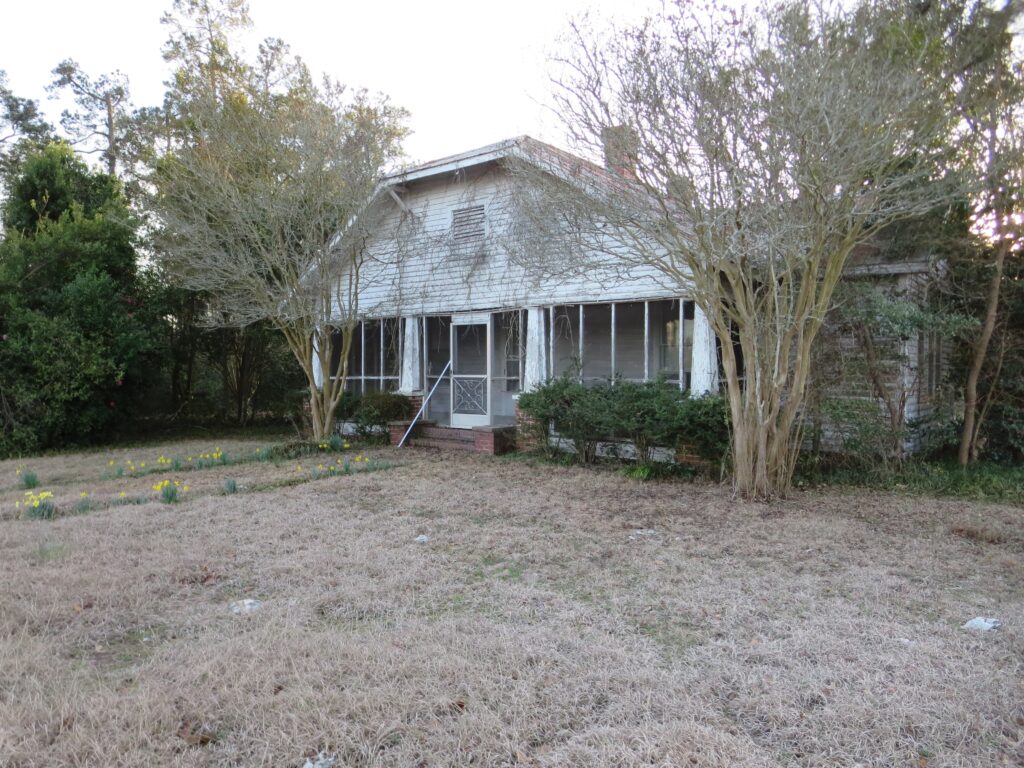
Military Experience
Daniel Tucker Mathis, Jr. arrived home from college after his sophomore year at Clemson and informed his parents that he wanted to join the U.S. Army Air Corps. He enlisted and was called to service in February 1943 during his junior year of college.
After initial training, Mathis was accepted into the Army Advanced Flying School at Moore Field in Mission, Texas, where he was commissioned as a second lieutenant in late March 1944. He received his wings at the same time as six other Clemson men, as part of the largest-ever graduating class of pilots from Central Flying Command. Once he obtained his wings, Mathis was sent to advanced flight training school to fly the P-47 fighter.
Action in the Pacific
Following his training, Mathis was sent to the Pacific where he joined the 15th Fighter Group, 78th Fighter Squadron at Saipan in the Northern Mariana Islands. Also known as the Bushmasters, the 78th converted to using the P-51 Mustang Fighters.
In March 1945, the 78th Fighter Squadron flew to Iwo Jima, Japan, to support U.S. invasion of the island. Heavy fighting was happening on parts of the island when the squadron arrived. Mathis wrote frequent letters home that described his life living in foxholes during the months he spent on Iwo Jima.
Lieutenant Michaelides, the 78th Fighter Squadron’s historical officer, reported the ups and downs of life on Iwo Jima. In May 1945, the squad had ice cream and steak for the first time since arriving on the island. Unfortunately, a hurricane hit the island, and they lost the squadron dog.
Very Long Range Missions (VLR)
Iwo Jima was essential to the planned invasion of Japan. After victory in Europe, the next step was to finish the conflict with Japan, which was expected to end with the U.S. mounting a large-scale invasion. The first step of this plan included long-range bombing missions from Iwo Jima. The P-51 Mustang fighters accompanied the B-29 “Flying Fortresses” bombers on their missions.
Unlike European bombing runs, the longest of which lasted two or three hours, a bombing run from Iwo Jima to mainland Japan and back took at least eight hours. The P-51 Mustangs had to be outfitted with extra gas tanks, which were dropped as the planes approached Japan. The pilots who survived the missions regularly returned to base on fumes.
Famous at Home
From late May to early June 1945, Lieutenant Mathis’s name appeared in U.S. newspapers nationwide. On May 29, 1945, a bombing run over Yokohama, Japan, was met with fierce resistance from Japanese Zero fighters. Mathis and his wingman, Lieutenant Jerry Yellin, were credited with taking down a Zero fighter, Mathis’s first credited enemy kill of the war. Mathis was quoted in the Lathrop Optimist about the battle: “At first, we saw a lot of little fires down there in Yokohama. Then, these all came together, and the whole place was burning. Our B-29’s sure did a swell job!” Mathis died three days later, just short of his twenty-third birthday.
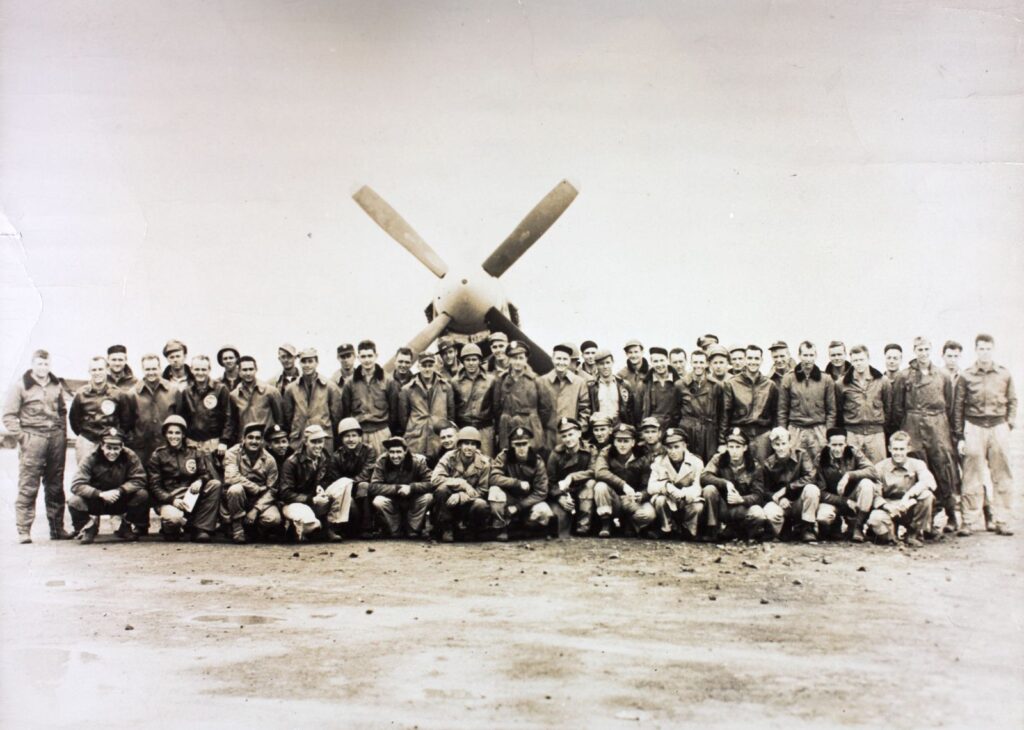
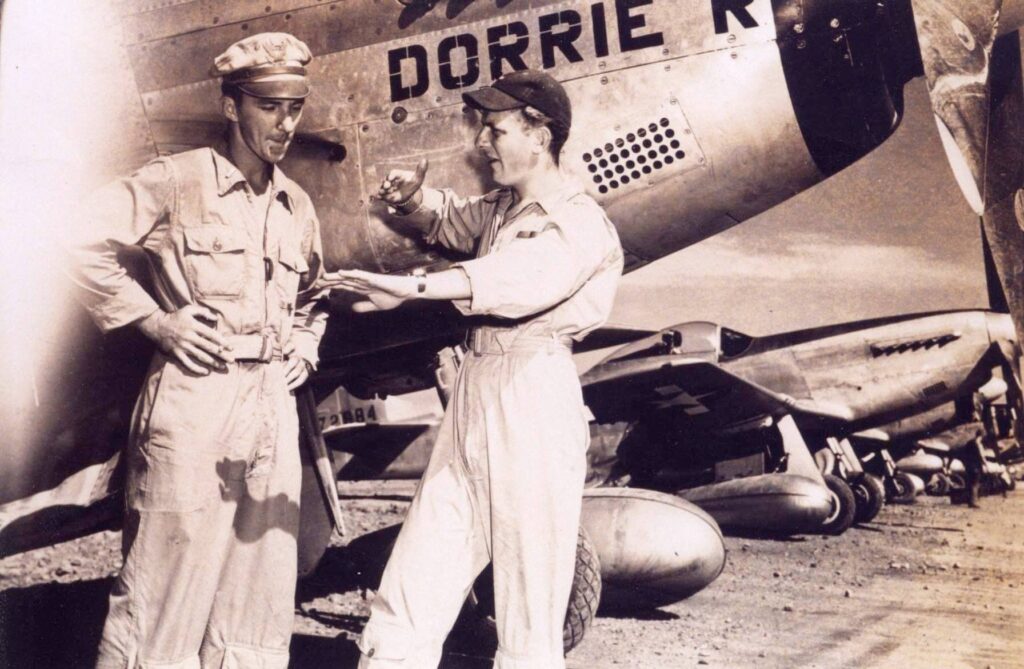
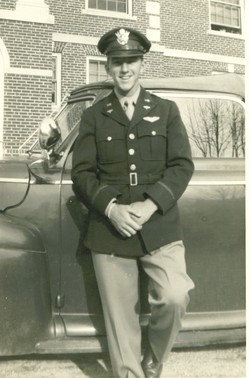
Commemoration
On June 1, 1945, Lieutenant Daniel T. Mathis, Jr. was one of 170 Mustang pilots that left Iwo Jima to escort B-29s on a bombing raid to Osaka, Japan. He was photographed just before the flight in front of the plane he would fly, the Dorrie R. This plane was assigned to his friend and mentor, Lieutenant Jerry Yellin, who was grounded after having all four wisdom teeth pulled two days before.
The mission encountered a massive weather front several hundred miles into the flight. The lead B-29, unaware of the capabilities of the smaller P-51 planes, began to climb through the storm. The P-51s tried to escort the bombers through the storm but were quickly overcome by harsh conditions. They faced heavy winds, snow, and ice that made their flying instruments useless and began to tear their light planes apart.
One squadron member tried to fly under the storm. Mathis’s squadron, the leader of the 78th Fighter Squadron, emerged at over 22,000 feet. Inside the storm radio communication was impossible. Pilots later reported witnessing wings being ripped off of planes by the weather conditions, mid-air collisions between multiple planes, and being unable to determine whether they were flying right side up.
The planes that made it to Japan had to turn around and fly back through the weather toward Iwo Jima. In total, 27 P-51s went down, and 24 of their pilots were lost, with neither their planes nor their bodies ever recovered.
While no one can be sure, it was assumed that Mathis was the victim of one of the many mid-air collisions during the storm. C.C. Grimes described the scene in his letter to Lieutenant Mathis’s parents: “I was on the same mission that Dan was on. Our formations had to go through some bad weather, and while we were flying instruments, a group of inexperienced pilots lost control of their airplanes. The[y] were flying above us and came spinning down through our formations and collided with several of our planes. Dan probably was one of them.”
When the 78th Fighter Squadron emerged above the storm, the wing leader called for Mathis’s position. He never responded. He was reported missing in action approximately 150 miles south of Osaka, Japan.
Military Honors
Lieutenant Mathis received the Air Medal, the Asiatic/Pacific Campaign Medal, the World War II Victory Medal, and the Purple Heart.
A Brother Remembered
In 2010, Mathis’s older sister, Norma, revealed in an interview that it took weeks for the family to receive the news, which came not from the Army but in a letter from a friend in Iwo Jima. In the letter, C.C. Grimes wrote, “Undoubtedly Dan was the best liked boy in this squadron. I’ve never seen the loss of one man affect a group of men like it has us.”
According to family member Jean Mathis Aswell, “Dan’s mother, Minnie Latham Mathis, collapsed in her front yard when she got the telegram.” The telegram arrived on June 26, 1945. It would be another year before the U.S. Army declared Lieutenant Daniel Tucker Mathis, Jr. killed in action.
Lieutenant Mathis is remembered with a memorial at the Sweetwater Cemetery in Edgewater, South Carolina. Both his parents, his sister Norma, and his brother Fred were laid to rest nearby. Clemson University honored Lieutenant Daniel Mathis with a stone at their Scroll of Honor and at the Mell Hall Memorial, commissioned by the class of 1944 to honor all of its fallen members. His name also appears on a memorial for other North Augusta men killed in action during both world wars, sponsored by the American Legion, in North Augusta, South Carolina.
The American Battle Monuments Commission has forever memorialized 1st Lieutenant Daniel Tucker Mathis, Jr. in the Courts of the Missing at the Honolulu Memorial, where “the names of Americans who gave their lives in the service of their country and whose earthly resting place is known only to God.”
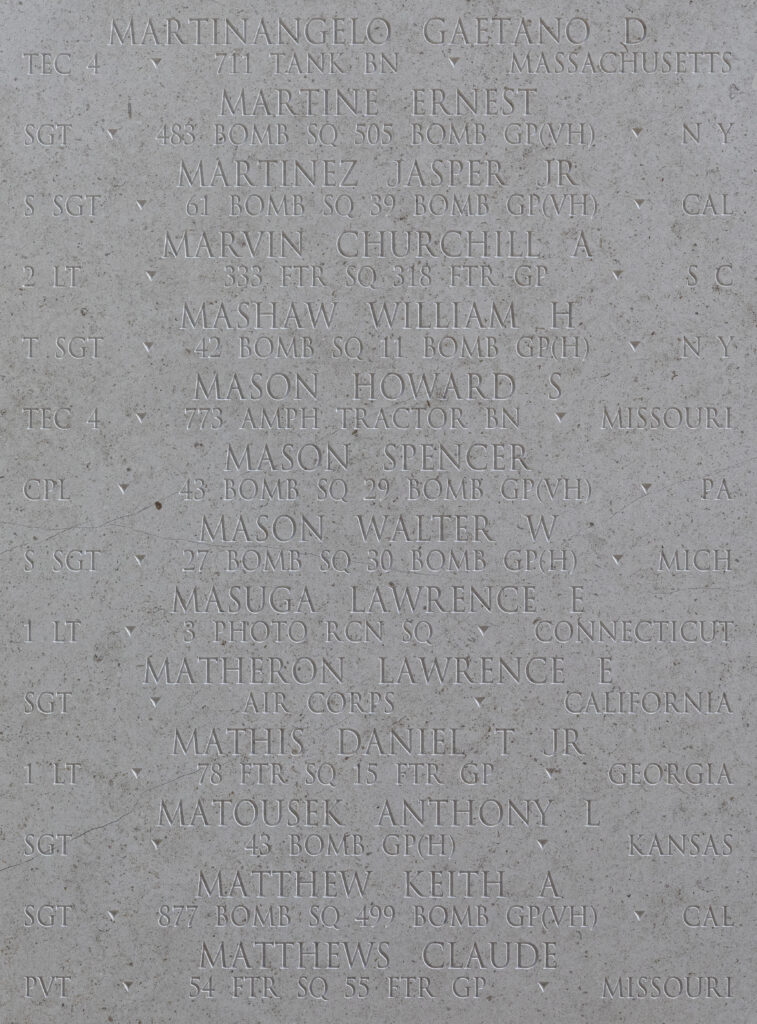
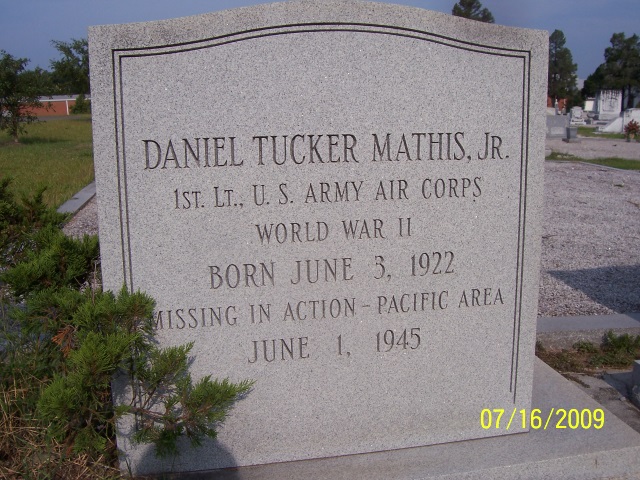
Bibliography
Primary Sources
“Aiken County Candidates Support Thurmond, Denounce Judge Wrong.” Aiken Standard and Review [Aiken, SC], August 6, 1948. Newspapers.com (9538209).
“Aiken County Farm Bureau is Organized.” Aiken Standard and Review [Aiken, SC], 07 July 7, 1944. Newspapers.com (9542413).
“Army Mustangs Put to Flight Sons of Heaven.” The Times and Democrat [Orangeburg SC], May 30, 1945. Newspapers.com (344588636).
“Capt. Collins lands on Iwo with 5 Gallons Gasoline.” The Lathrop Optimist [Lathrop, MO], June 14, 1945. Newspapers.com (335952310).
Clemson Agricultural College of South Carolina Yearbook, 1918. U.S., School Yearbooks, 1900-2016. https://ancestry.com.
Clemson Agricultural College of South Carolina Yearbook, 1941. U.S., School Yearbooks, 1900-2016. https://ancestry.com.
Clemson Agricultural College of South Carolina Yearbook, 1942. U.S., School Yearbooks, 1900-2016. https://ancestry.com.
Clemson Agricultural College of South Carolina Yearbook, 1943. U.S., School Yearbooks, 1900-2016. https://ancestry.com.
Daniel Tucker Mathis, Jr. World War II Draft Cards Young Men, 1940-1947. Digital Images. https://ancestry.com.
Daniel Tucker Mathis. Individual Deceased Personnel File. National Archives and Records Administration – St. Louis.
Daniel Tucker Mathis. Official Military Personnel File (partial), Department of the Army. National Archives and Records Administration – St. Louis.
Daniel Tucker Mathis Jr. U.S., World War II Draft Cards Young Men, 1940-1947. Digital images. https://ancestry.com.
“4-H Clubsters are Honored on Achievement Day Here.” Aiken Standard and Review [Aiken, SC] March 6, 1940. Newspapers.com (9711519).
“4-H Clubsters Do Splendid Work During Past Year.” Aiken Standard and Review [Aiken, SC] January 5, 1938. Newspapers.com (14557097).
“Interest in Primary of Tuesday is High. Negro Enrollment is Low.” Aiken Standard and Review [Aiken, SC], August 6, 1948. Newspapers.com (9538209).
Jerome Yellin Collection. Personal Narrative. Veterans History Project, Library of Congress (AFC/2001/001/95409). https://www.loc.gov/item/afc2001001.95409/.
“Lt. Daniel Mathis Missing in Action.” The Columbia Record [Columbia, SC], July 21, 1945. Newspapers.com (744986109).
“Lt. D.T. Mathis Missing in War.” The State [Columbia, SC], July 21, 1945. Newspapers.com (748746771).
Lowe, Jet. Graniteville Mill, Marshall Street, Graniteville, Aiken County, SC. Photograph. Historic American Building Survey, Library of Congress (SC-0931). https://www.loc.gov/item/sc0931/.
“A Marriage of Great Interest.” Edgefield Advertiser [Edgefield, SC], October 9, 1918. Newspapers.com (72210607).
Mathis Family Records, 1939-2010. Courtesy of Jean Mathis Aswell.
Mellette, R.R. “Aiken County Farm Flashes.” Aiken Standard and Review [Aiken, SC], October 13, 1944. Newspapers.com (9546186).
“Notice: D.T. Mathis to run for County Commissioner.” Aiken Standard and Review [Aiken, SC], August 6, 1948. Newspapers.com (9538261).
“News of Societies, Clubs and Women’s Organizations.” Aiken Standard and Review [Aiken, SC], March 15, 1944. Newspapers.com (9537875).
“North Augusta Finals Planned.” Aiken Standard [Aiken, SC] May 22, 1940. Newspapers.com (9715310).
“North Augusta Killed in Action Monument.” American Legion War Memorials. Accessed March 10, 2025. https://www.legion.org/memorials/united-states/south-carolina/united-states-south-carolina-north-augusta-killed-in-action-monument.
“Senior Play in North Augusta.” Aiken Standard and Review [Aiken, SC] April 10, 1940. Newspapers,com (9713084).
“Seven Former Clemson Men Get Pilot Wings.” The State [Columbia, SC], April 16, 1944. Newspapers.com (748903990).
“78th Fighter Squadron History, June 1 to June 30, 1945.” 7th Fighter Command. Accessed February 27, 2025. https://www.7thfighter.com/historys/78th/45-06.pdf.
“78th Fighter Squadron History, May 1 to May 31, 1945.” 7th Fighter Command. Accessed February 27, 2025. https://www.7thfighter.com/historys/78th/45-05.pdf.
South Carolina. Edgefield County. 1920 U.S. Census. Digital images. http://ancestry.com.
South Carolina. Edgefield County 1930 U.S. Census. Digital images. http://ancestry.com.
South Carolina. Edgefield County. 1940 U.S. Census. Digital images. http://ancestry.com.
“Special to The State.” The State [Columbia, SC] June 10, 1934. Newspapers.com (748351423).
“Tangle Over Japan.” The Kansas City Times [Kansas City, MO], May 30, 1945. Newspapers.com (655479819).
“With the Colors.” The Atlanta Journal [Atlanta, GA], March 26, 1944. Newspapers.com (974559924).
Secondary Sources
“1Lt Daniel ‘Danny’ Tucker Mathis, Jr.” Find a Grave. Updated August 6, 2010. Accessed December 30, 2024. https://www.findagrave.com/memorial/56124586/daniel-tucker-mathis.
“Brief History of Aiken County, South Carolina.” Aiken County Historical Society. Accessed January 13, 2025. https://aikencountyhistory.org/about/.
Britt, Phyllis. “Remembering a local World War II hero.” The Star of North Augusta [North Augusta, GA], June 8, 2010. https://www.postandcourier.com/northaugusta/archive/news/remembering-a-local-world-war-ii-hero/article_ba6a088c-4de6-58fd-8969-7152c602fd2a.html.
Brown, Don and Yellin, Jerry. The Last Fighter Pilot: The True Story of the Final Combat Mission of World War II. Regnery Publishing, 2017.
“Daniel T. Mathis, Jr.” American Battle Monuments Commission. Accessed October 19, 2024. https://www.abmc.gov/decedent-search/mathis%3Ddaniel.
“Daniel Tucker Mathis, Jr.” The Clemson Corps. Accessed October 19, 2024. https://soh.alumni.clemson.edu/scroll/daniel-tucker-mathis-jr/.
“Daniel Tucker Mathis III.” Find a Grave. Updated September 8, 2006. Accessed October 20, 2024. https://www.findagrave.com/memorial/15662466/daniel-tucker-mathis.
“Mathis, Daniel Tucker, Jr., 1st Lt.” Together We Served. Accessed November 19, 2024. https://airforce.togetherweserved.com/usaf/servlet/tws.webapp.WebApp?cmd=ShadowBoxProfile&type=Person&ID=159009.
“The Very Long Range Mission.” The Sun Setters VII. Accessed February 15, 2025. https://www.sunsettersww2.com/vlrmission.
“World War II POW Camp.” The Historical Marker Database. Accessed February 2, 2025. https://www.hmdb.org/m.asp?m=36396.
“WWII Prisoners of War in Georgia: Camp Gordon’s POW Camp.” U.S. Army. Accessed March 9. 2025. https://home.army.mil/eisenhower/application/files/8816/3593/3486/POW_Camp_Gordon.pdf.
Yellin, Jerry. Jerry’s Last Mission. 2021.
This profile was researched and created through the Researching Silent Heroes program, sponsored by the American Battle Monuments Commission.

